Name RMS Scythia Launched 23 March 1920 | Port of registry United Kingdom Maiden voyage 20 August 1921 | |
 | ||
Route New York to the MediterraneanLondon to QuebecLiverpool-Cobh-Halifax-New York | ||
wikipedia rms scythia
RMS Scythia was a Cunard liner. She sailed on her maiden voyage in 1921, and became a troop and supply ship during the Second World War. Scythia was the longest serving Cunard liner until 4 September 2005, when its record was surpassed by RMS Queen Elizabeth 2.
Contents
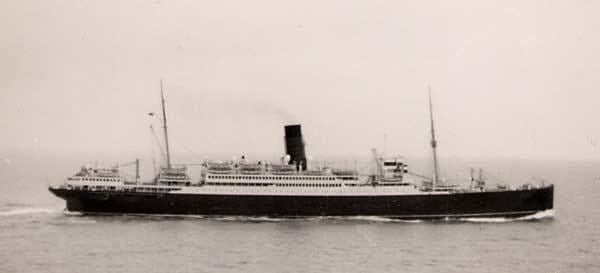
History

Following heavy losses during the First World War, the Cunard Line embarked on an ambitious building programme. They decided to build "intermediate", 19,000-tonne ships, rather than the massive liners they had previously employed. The Scythia was the first ship in this new fleet, and construction began in 1919. The Scythia was built for the services between Liverpool and Queenstown in the British Isles to New York and Boston, in the United States. A luxury liner designed to appeal to American tourists, in the mid-1920s, she began sailing from New York City to the Mediterranean.
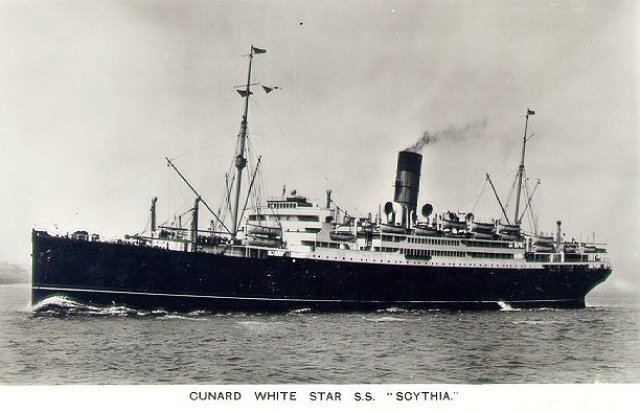
The Scythia was requisitioned at the end of 1939, left Liverpool on 24 September 1940 with 48 children bound for Boston, sponsored by readers of the Boston Evening Transcript newspaper, part of a wider British evacuation programme under the Children's Overseas Reception Board.
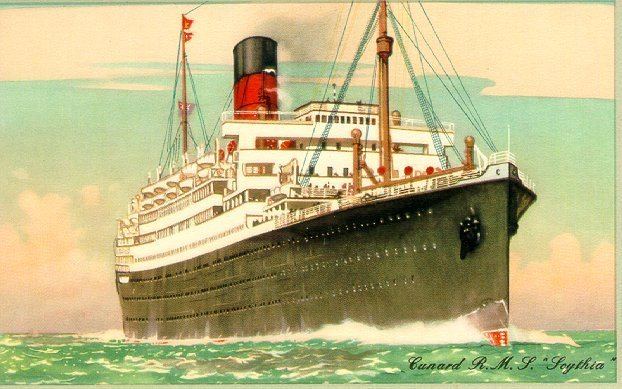
She was used as a troop ship on 1 November 1940, and sailed from Liverpool to the Middle East carrying the 1st King's Dragoon Guards. She then saw service carrying evacuees from Liverpool to New York. In 1942, the Scythia took part in the British Army landings in North Africa. On 23 November she was struck by an aerial torpedo. The crew managed to get to harbour at Algiers, and the ship suffered only five casualties out of a complement of 4,300 men.
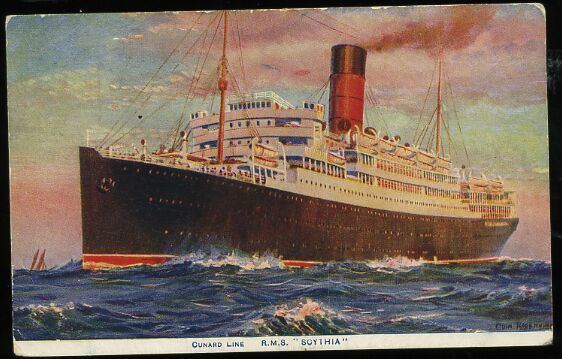
The Scythia was salvaged and taken to New York for repair in January 1943, and afterwards ferried American troops to Europe. At the end of the war, she took many American troops back from Europe, many of them accompanied by their young brides, before sailing to India to bring home British troops from the war in the East. She was also a war bride ship completing a number of voyages to take Canadian war brides and their children from Liverpool to Pier 21 in Halifax in the early part of 1946. One of her last missions as a troop ship was to bring the 1st King's Dragoon Guards home to Liverpool, on 11 March 1948.
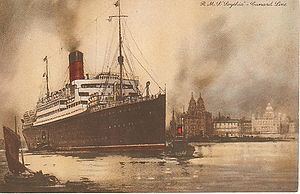
Later in 1948, the Scythia was handed to the International Refugee Organisation to take refugees from Europe to Canada. In 1950 she became a passenger ship again, sailing from Britain to Canada and later to New York. Again in 1957 the Scythia was used to transport Hungarian refugees to Canada (departed Southampton England 19 Jan, 1957), landing in Halifax, Nova Scotia at Pier 21 (Canada's equivalent to Ellis Island in New York). Her final route was around the North Sea. In 1958 the Scythia was delivered to the shipbreakers at Inverkeithing by Captain Geoffrey Thrippleton Marr, her final commander.
